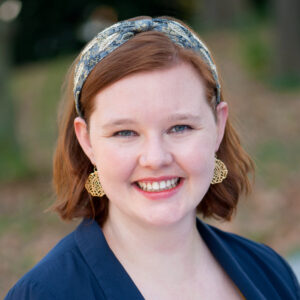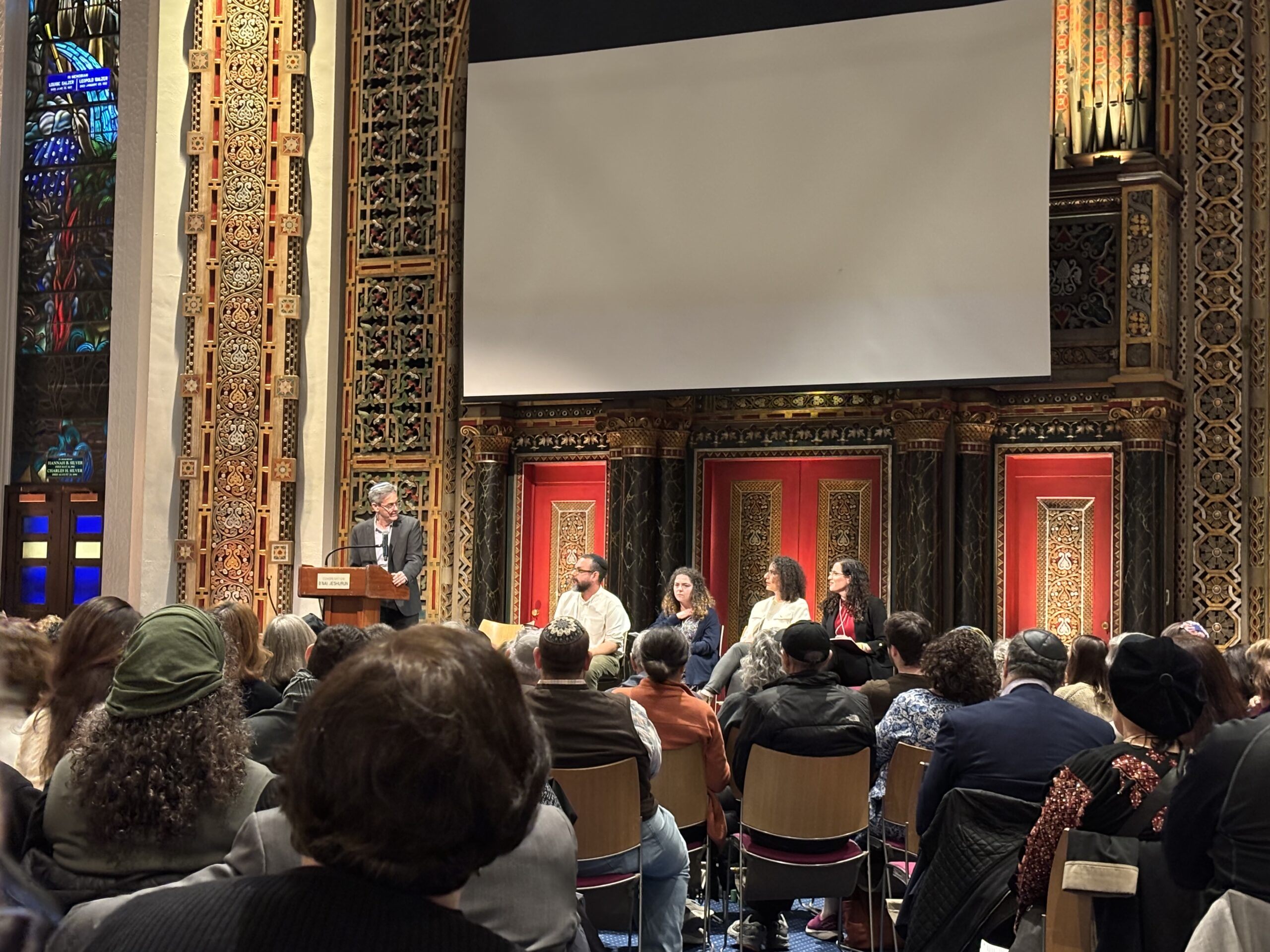INSIGHTS
Dati, but not “Leumi:” Reflections from Smol Emuni USA
By Rabbi Margo Hughes-Robinson
On Rosh Hodesh Nissan of this year, several hundred traditionally observant Jews gathered on New York’s Upper West Side for the first-ever “Smol Emuni” US convening, a conference for the “faithful Left,” as the phrase is often translated. As the day went on, it was clear that while a conversation like this had yet to occur on the scale that marked the convening, these questions had been explored for months at Shabbat tables, kiddush corners, and small pockets of the Internet. But like the inaugural gathering of Smol Emuni two years ago in Israel, the Orthodox and observant Jewish communities of the United States were ready for an opportunity to recognize themselves as a distinct movement within their larger community, folks who are “Dati” in the traditional sense, but who eschew the nationalism and rightwing political orientation that often characterize their Orthodox dati leumi (national religious) counterparts in Israel and in the United States.
It was profound for me particularly to celebrate the places of not just ideological but practical overlap in frum and praxis-oriented leftist spaces – the shared commitments to living out one’s values every day, the attention to dietary needs, and even the welcoming of the next generation. (“Oh my goodness, look! A child! I never see children in public in New York!” was the reaction of Dr. Leah Shakdiel to seeing my son running around between conference sessions). And yet, the moments of greatest meaning often arose from conversations that many would never expect in a room full of Jews wearing kippot and kisui rosh, such as the communal response to a question raised by featured speaker Michael Manekin (whose book “End of Days: Ethics, Tradition and Power in Israel” I reviewed in a recent past edition of this e-magazine). At a session that featured a screening of the Oscar-winning documentary “No Other Land,” Manekin opened the discussion by asking, “just by show of hands, how many people here have done protected presence in the West Bank?” I was shocked to look around and see that fully a third of the room had their hands in the air, and had joined the conversation not to discover the crisis of expulsions and intimidation of Palestinians in the West Bank, but to engage deeply in a dynamic that they had lived.
An urgency permeated this conversation. While participants seemed relieved to find themselves members of a small tribe-within-the-tribe, not alone in their halachic practice or ethical commitments, there was a heightened concern not only over the ongoing devastation and war crimes in Gaza and the state of the hostages, but the intensifying tightening of the window of discourse around Israel in participants’ own religious communities. Particularly, deep concerns were expressed around the political culture in Jewish day schools. Parents of young people enrolled in these institutions shared that they were taken aback by what they perceive as a growing embrace of far right and even ultranationalist discourse surrounding Israel, especially among teenage male students. This turn to the right existed both on a social level and within the Israel education curriculum offered in these schools, according to parents and alumni, with many noting that even history and social studies teachers whose personal views may differ feel a great deal of pressure to hide their political affiliations and values in the classroom. “Why can’t we just teach about the Nakba as a historical fact?” expressed one frustrated parent of day school alumni. “We teach the kids about the ethnic cleansing and extermination – some even call it genocide – of Native Americans in history class. Why can’t we discuss the Nakba?”
As someone who navigates both the broader Jewish political left and the observant world, many aspects of the day felt to me like a breath of fresh air. Here were the Orthodox rabbinical students talking about their desire to articulate a theological and practical response to Israeli ultranationalism within frameworks that were meaningful to the communities they seek to serve, and religious Jews eager to listen to the words of the Palestinian plenary speaker, clear that the messianic and violent vision proposed by Israel’s far right did not represent them.
But at the same time, I worried that the same dynamics that often hobble the Left in Israel were also at play in these convening conversations. Overwhelmingly, the room and the speakers were white and Ashkenazi Jews, associated in the past several generations in Israel and in the American Jewish community with a certain mid-century cultural elitism and successful navigation of racial privilege – the success of American Jewish day schools in the 1960s and 1970s was directly tied to the Brown v. Board of Education decision in 1954 that desegregated American public schools – that neither represents the multicultural reality of New York nor Israel’s observant Jewish community. The absence of Jews of color and Sepharadi and Mizrachi Jews, as well as the lack of the explicit class analysis that one finds in abundance in leftist Jewish spaces, has profound impact on the Israeli left’s ability to mobilize a significant enough percentage of the communal population and build effective power to make change, and leaves it without the critical insight to articulate policy changes that are actually likely to resonate within the broader Jewish community as a whole. In Israel, these dynamics led directly to the consolidation of power on the right that characterized the “Revolution of 1977,” the effects of which still deeply affect everything from party affiliation to Israeli foreign policy today.
In an explicitly religious Jewish space such as Smol Emuni, the consequences extend even further. I found myself sitting in near disbelief as one deeply learned plenary speaker after the other referenced Rav Soleveitchik’s influence on their considerations about how traditional Jewish thought and practice might meet this moment of emergency in Israel and the broader Jewish world, but it was not until Member of Knesset Naama Lazimi credited the Rambam, the Beit Yosef, and Rabbi Ovadia Yosef on her own understanding of the importance of pidyon shvuyim (the commandment to redeem captives) that the halachic giants of the Sepharadi world were referenced as foundational to this ongoing conversation.
This dynamic may say more about an understandable American Orthodox investment in its own gedolei hador and halachic cultural context, which would support the continued existence of “Smol Emuni USA” as a specific subgroup, having a conversation that is both connected to and yet distinct from the religious and political context of religious Jewish leftists in the Land. At the same time, however, a conversation that remains grounded in an American, white, and Ashkenazi theological vocabulary will not equip organizers seeking to create the necessary narrative change in Jewish religious communities in Israel and beyond, and engender a dati worldview that is less wed to an ultranational project. A powerful religious left in either country will have to answer back convincingly to a complex reality and reckon with several factors: that of the racism and classism of the traditional Ashkenazi secular left in Israel, the cultural and religious impact of Sepharadi and Mizrachi hachamim in the Jewish world broadly and on Israeli Jewish life and politics in particular, and the phenomenon of American Jewish orthodox radicalism actually exported to Israel from Brooklyn and beyond – we cannot ignore the fact that both Meir Kahane and Baruch Goldstein were products of American extremism as they formulated a Jewish theology of violent hate.
These dynamics, of course, are endemic to the larger Jewish left, and are not the sole responsibility of a nascent organization. As a rabbi, a progressive, and an observant Jew, I could not be more grateful for the space that groups like Smol Emuni US and Halachic Left are building, and the rapid growth of these groups is proof that I am far from the only Jew with traditional practice who needs this community. But as these organizations move from creating islands of solace for like minded frum and masorti Jews towards a larger project of solidarity and building power for real change in our communities and beyond, we cannot succeed without a serious reckoning about which parts of our already small community we seek to bring along with us.

Rabbi Margo Hughes-Robinson is the Executive Director of Partners for Progressive Israel.






Leave A Comment